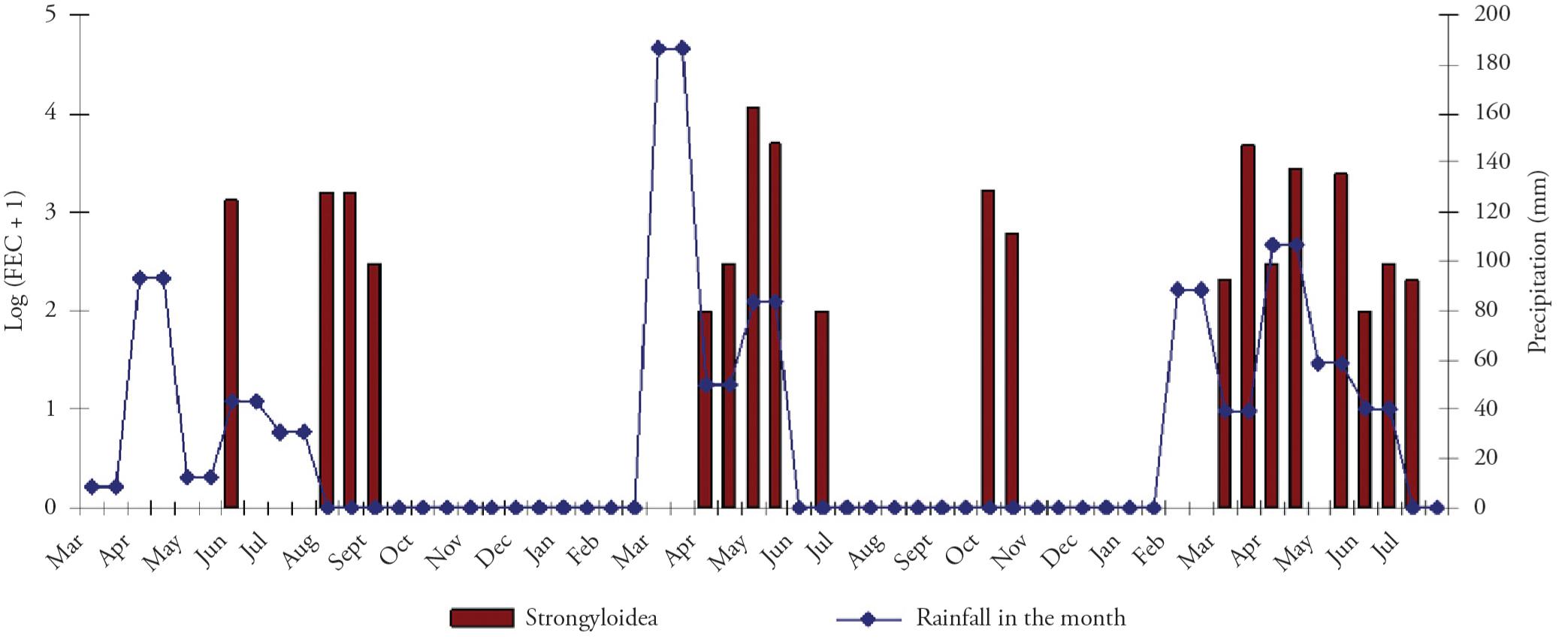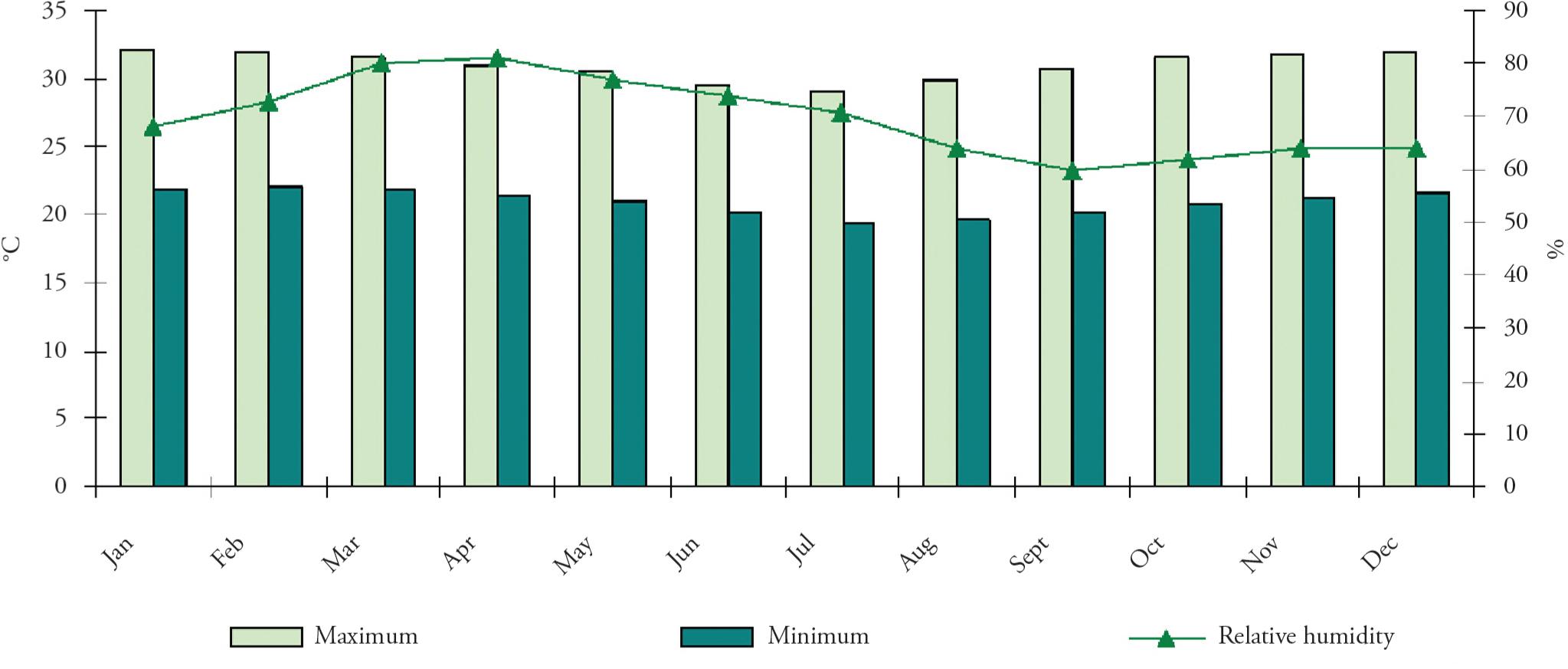The objective of this study was to determine the seasonal distribution and gastrointestinal nematode parasite load in crossbred Santa Inês tracer lambs, and to correlate the rainfall during the study period with occurrences of parasitic infections. Sixty-four male tracer lambs between the ages of four and eight months were used in the study. Two tracer lambs were inserted into the herd every 28 days to determine the pattern of infective larvae available in the environment. Variation in the fecal egg count (FEC) of nematodes was observed at the study site, with many samples containing undetectable parasite loads during the dry season. The larvae identified in coprocultures wereHaemonchus sp., Trichostrongylus sp.,Cooperia sp., Strongyloides sp. andOesophagostomum sp. The nematodes recovered at necropsy were Haemonchus contortus, Trichostrongylus colubriformis, Cooperia punctata, C. pectinata, Trichuris sp.,Oesophagostomum sp. and Skrajabinema ovis. The total number of larvae and the total number of immature and adult forms recovered from the tracers showed seasonal distributions that significantly correlated with the amount of rainfall received that month (p value ≅ 0.000 in all cases ). The species H. contortus was predominant in the herd and should be considered to be main pathogenic nematode species in these hosts under these conditions.
FEC; tracer animals; Haemonchus contortus ; Trichostrongylus spp.; Cooperia spp







